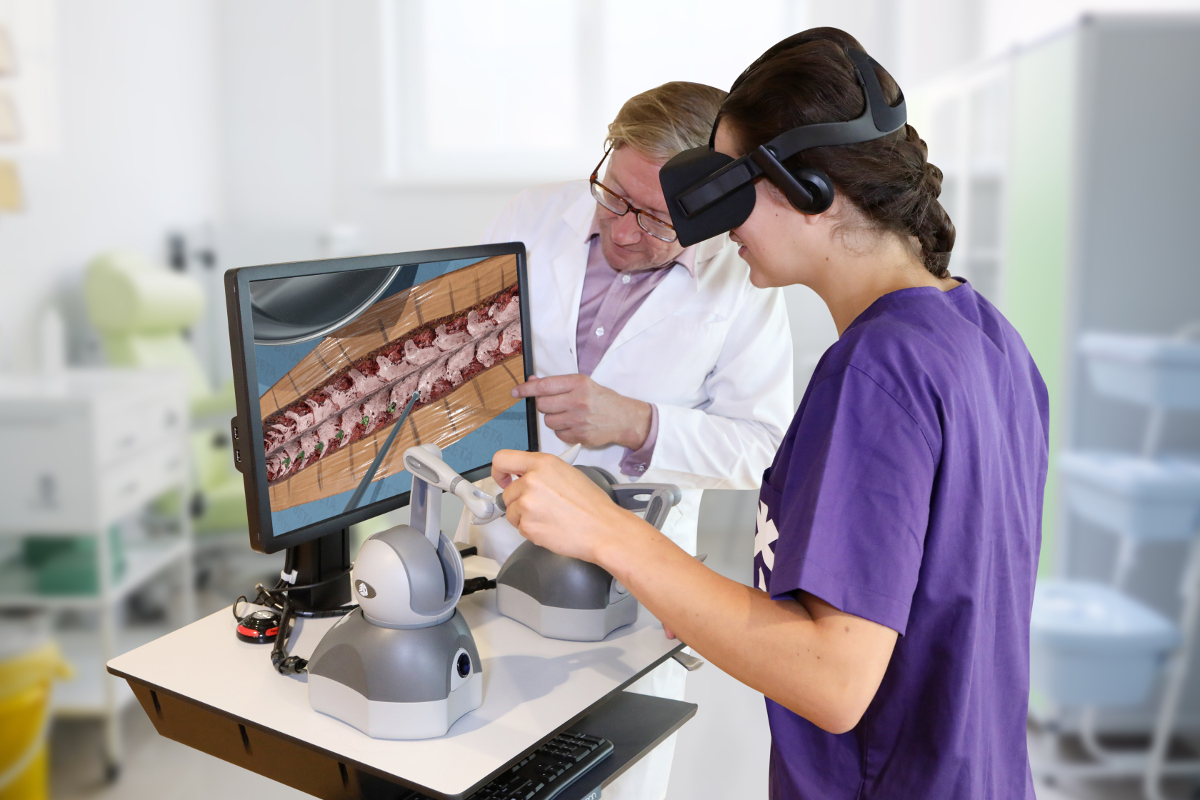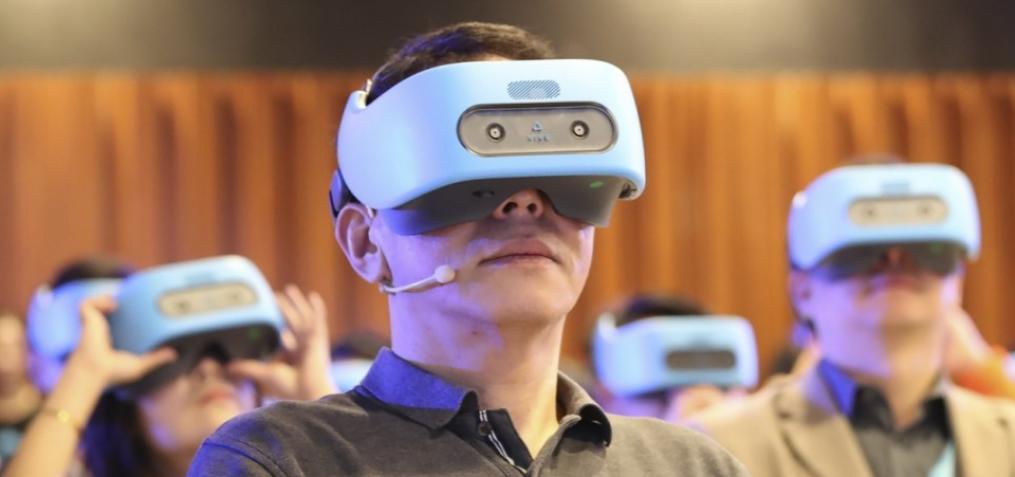Emerging digital technologies are taking over learning and development (L&D) strategies, especially now, when L&D professionals are adapting to fluctuating policies and employee and business needs. The use of extended reality (XR) training is becoming more common in all kinds of organizations, from powerhouses like Walmart and Amazon to nonprofits.
XR technologies, including virtual reality (VR) and augmented reality (AR), can solve business needs and elevate learner engagement, but which is the better modality for your training? Let’s explore the key distinctions and advantages of each and when you can most effectively deploy them:
What’s the Difference?
Both AR and VR have unique technical capabilities that provide different user experiences. AR adds to — or augments — reality by superimposing text, images, videos and 3D objects onto the “real world.” AR programs are typically accessed by looking through a phone, tablet or headset.
Virtual reality has capabilities that extend beyond AR and provides a more thoroughly immersive experience. It creates an entirely new environment with a 360-degree simulation, accessed through a headset. Both AR and VR bring engaging elements that drive measurable results to training programs, but there are specific training areas where one technology is better suited than the other.
When to Use AR Training
Product Knowledge Training
AR can bring products to employees before they’re in stock. With tablets or smartphones, employees can pull up product offerings, view them in scale and learn everything they need to know to help customers.
Process Training
Do your employees need to follow specific steps to complete a task? With AR, they can follow step-by-step instructions on, for example, repairing an object. Integrating how-to videos or diagrams will enable an even deeper understanding of a process. With AR, employees can follow step-by-step instructions.
Equipment Training
Manufacturing equipment should run full time and often cannot be shut down for on-the-job training. AR can recreate complex equipment, enabling training to take place at a location that’s convenient for employees. Through their device, employees can see the equipment at its actual size, explore inside it and examine individual parts to learn how it operates.
When to Use VR Training
Leadership Training
VR gives leaders the ability to practice their skills in a safe environment. For example, they can practice navigating tense situations or coaching employees by completing a 360-degree VR program that uses actors filmed in real offices. Once they complete the VR programs, they can use those skills in real life with their teams, resulting in a more pleasant experience.
Soft Skills Training
From navigating a difficult conversation to providing service with a smile, organizations can create scenarios that test their employees’ soft skills. 360-degree VR can create a realistic environment for employees to understand emotional reactions and practice skills in role-playing.
Safety Training
Safety can be one of the most challenging training topics, because employees are only tested when a real-life emergency happens. VR, however, can recreate emergency scenarios at an office, warehouse or distribution center. Not only does this approach eliminate any risk to lives or property, but the simulated environment gives employees the opportunity to practice their reaction time, decision-making and ability to work under pressure. This way, they’re better prepared if an emergency occurs in real life.
Both AR and VR come with benefits and applications for training programs. When deciding which modality to use, organizations must remember their learning objectives and determine which technology will help them meet those objectives. Whether using AR or VR, there has never been a better time to elevate training with XR technology. Both AR and VR come with benefits and applications for training programs.
Quelle:




